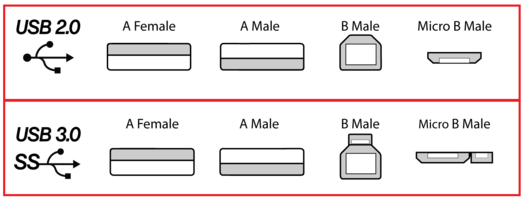

- Usb 2 vs usb 3 for audio install#
- Usb 2 vs usb 3 for audio serial#
- Usb 2 vs usb 3 for audio drivers#
Windows now selects the device-specific driver instead of the default USB audio 2.0 driver. You can do this by using the appropriate installer for the device.
Usb 2 vs usb 3 for audio install#
If the device is not yet connected, install the device-specific driver first. The problem may not occur if the device is connected to a different USB port. Method 2Ĭonnect the device to a different USB port. In step 2, don't select the Delete the driver software for this device check box. Select and hold (or double-click) the name of the device, and then select Uninstall.A full feature USB 3.1 Gen 2 C to C cable is able to transmit data at. To fix this problem, use one of the following methods. USB Type C connector is compatible with USB 2.0, 3.0, 3.1 Gen 1 and Gen 2 signals. Because the new driver does not support the WaveRT port, the system cannot access the driver. Therefore, the operating system assumes that the new driver also supports the WaveRT port. When the device-specific driver replaces the default driver, the device interface that is created by usbaudio2.sys is still used because the reference strings overlap.
Usb 2 vs usb 3 for audio serial#
It has largely replaced interfaces such as serial ports and parallel ports, and has become commonplace on a wide range of devices.

Usb 2 vs usb 3 for audio drivers#
However, both drivers use the "wave" reference string when the device interface is registered. USB was designed to standardize the connection of peripherals to personal computers, both to communicate with and to supply electric power. This "audio not playing" problem occurs because the default USB audio 2.0 driver (usbaudio2.sys) uses the WaveRT port for operation but the device-specific driver does not. Both the Windows Audio and the Windows Audio End Point Builder services must be running for audio to work correctly. When you select the icon, you receive the following message:Īudio services not responding. The speaker icon on the task bar is marked with an X mark.

In this scenario, the device cannot be used, and the computer does not have sound.


 0 kommentar(er)
0 kommentar(er)
